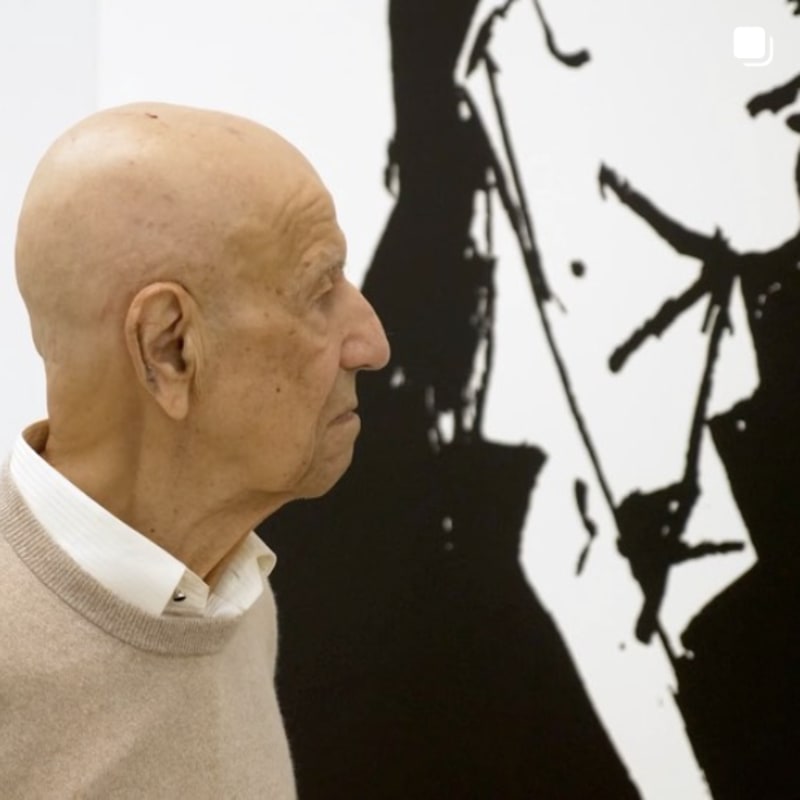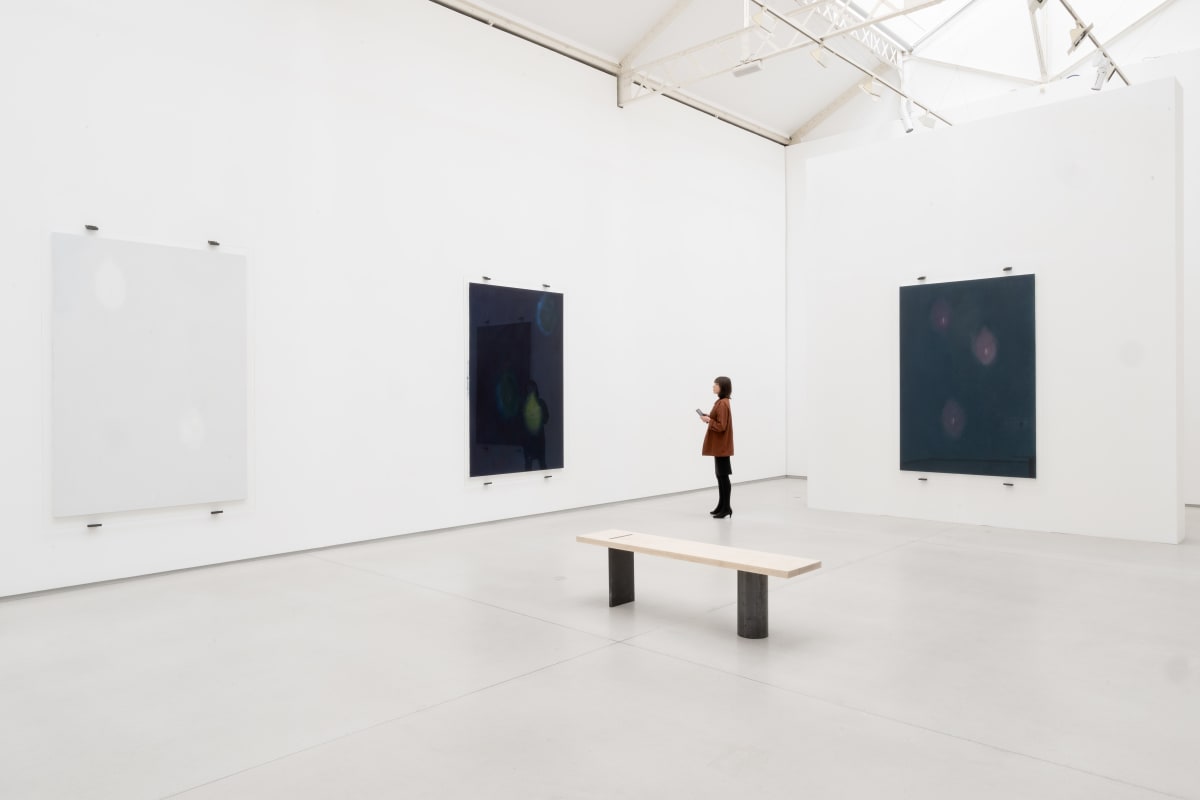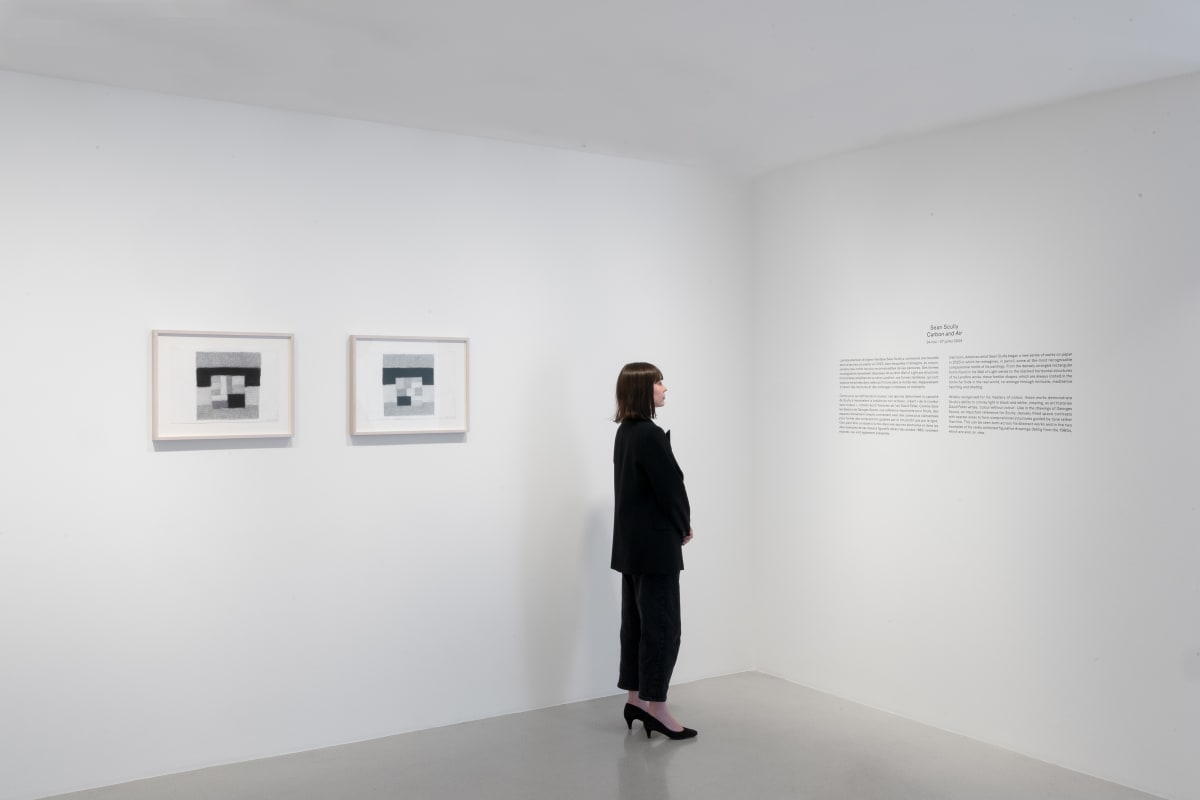

Overview
Rockenschaub's art, which he himself describes as "urban soul research" and "funky minimal", represents one of the most important and directional contributions to Conceptual and Minimal Art.
After numerous exhibition participations and a solo exhibition in our Parisian gallery (from which we were able to place the central work, a monumental inflatable sculpture, and a foil painting in the permanent collection of the Centre Pompidou), we are pleased to present the first solo exhibition of the Austrian artist Gerwald Rockenschaub in our Salzburg gallery.
Gerwald Rockenschaub was born in Linz in 1952, studied from 1978-82 with Prof. Herbert Tasquil at the University of Applied Arts in Vienna together with Herbert Brandl and Otto Zitko, and now lives in Berlin.
Rockenschaub's art, which he himself describes as "urban soul research" and "funky minimal", represents one of the most important and directional contributions to Conceptual and Minimal Art. By consistently developing these two art movements and his interest in pop culture, the artist has developed a language of colour and form which manifests itself in our exhibition on the one hand in eight new of his "foil pictures", which have been known for some years now; on the other hand, Rockenschaub has created new plexiglass works which oscillate between panel painting and wall object: sometimes completely monochrome, sometimes transparent with and without holes, sometimes dotted - just funky minimal. The main work of the exhibition is a 2 m high and 8 m long tunnel made of transparent Plexiglas and stainless steel, which extends over three rooms of the gallery and is "embedded" in light blue wall painting.
Gerwald Rockenschaub represented Austria at the Sao Paolo Biennale in 1989 and the Venice Biennale in 1993. His most important institutional exhibitions include the Kunstmuseum Lucerne in 1992, the Vienna Secession in 1994, the Kunstverein Hamburg in 1999, and 2100 GAM Turin and the BAWAG Foundation Vienna.
The Swiss Marcus Geiger, whose work we are showing in the gallery for the first time, was born in Muri near Bern in 1957. From 1978-82 he studied stage design at the Academy at Schillerplatz in Vienna with Prof. Lois Egg. Peter Kogler and Heimo Zobernig were fellow students of his.
Marcus Geiger's work can also be classified as minimal and conceptual art, but his approach is completely different: since he discovered the theme of terry cloth for himself in 1988, the artist has made pictures and sculptures out of the material, which, full of wilful humour and introverted irony, on the one hand quote greats such as Blinky Palenno and lmi Knoebel, and on the other hand a socio-critical-political component is always perceptible in his oeuvre: Marcus Geiger covers models of tanks and mattresses with colourful terry cloth, creates sculptures from banal everyday objects such as plastic buckets or rolls of toilet paper, or he paints the Vienna Secession in red (2001).
His most important exhibitions in recent years: 1994 Grazer Kunstverein, 2000 Kunstmuseum St. Gallen, 2001 Secession and Österreichische Galerie im Oberen Belvedere, Vienna. A joint exhibition with Peter Kogler is planned for May this year at the BAWAG Foundation in Vienna.












































































































































































